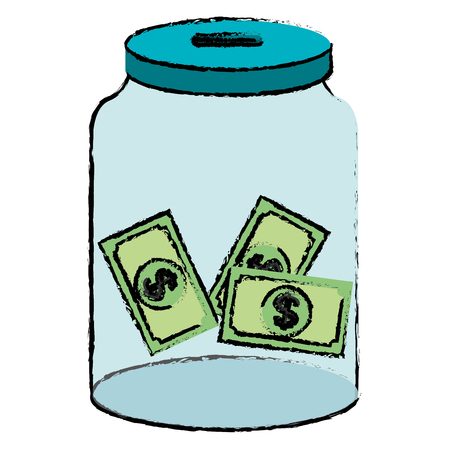Understanding Your Down Payment Goals
Before you start investing while saving for a house, it’s crucial to set a clear and realistic down payment goal. Knowing exactly how much you need will help guide your savings and investment strategy, keeping you motivated and focused along the way.
Why Set a Clear Target?
Your down payment is usually the biggest upfront expense when buying a home in the US. Setting a specific target amount not only gives you something concrete to work toward but also helps you choose the right type of investments and savings accounts. Without a clear goal, it’s easy to lose track or fall short of what you’ll actually need when it’s time to make an offer on your dream home.
Typical Down Payment Requirements in the US
In the United States, down payment requirements can vary widely based on the type of loan, lender policies, and local market conditions. Here’s a quick overview of common options:
| Loan Type | Minimum Down Payment | Notes |
|---|---|---|
| Conventional Loan | 3%–20% | Most buyers aim for 20% to avoid private mortgage insurance (PMI). |
| FHA Loan | 3.5% | Backed by the Federal Housing Administration; more flexible credit requirements. |
| VA Loan | 0% | No down payment for eligible veterans or service members. |
| USDA Loan | 0% | No down payment in designated rural areas; income limits apply. |
How Your Goal Shapes Your Investment Timeline
The amount you need for your down payment directly impacts your investment timeline. If you’re planning to buy within a year or two, you’ll want safer, more liquid investments—like high-yield savings accounts or money market funds—to protect your principal. If your timeline is longer (three years or more), you might consider taking on a bit more risk with options like mutual funds or ETFs to potentially grow your savings faster.
Key Takeaway:
Setting a clear down payment goal—based on the type of home loan you expect to use—will shape how aggressively you invest and how much risk you can afford to take. Understanding these basics puts you in control as you work toward homeownership.
2. Balancing Liquidity and Growth
When you’re saving for a house, it’s important to grow your down payment while still being able to access your cash when you find the right home. This means finding the right balance between liquidity (how quickly you can get your money) and growth (how much your money can earn). Let’s explore some practical options available in the U.S. that help you achieve both goals.
Why Liquidity Matters
You never know exactly when the perfect home will hit the market. You need funds that are easy to access without major penalties or delays. At the same time, letting your savings sit idle in a regular checking account means missing out on potential growth.
Common Options for Growing Your Down Payment
| Account Type | Liquidity | Growth Potential | Risk Level | Notes |
|---|---|---|---|---|
| High-Yield Savings Account | Very High (instant access) | Low to Moderate | Very Low | FDIC insured; rates higher than regular savings accounts |
| Money Market Account | High (usually instant or within days) | Low to Moderate | Very Low | Check-writing privileges; FDIC insured up to limits |
| Certificates of Deposit (CDs) | Low (locked until maturity) | Moderate | Very Low | No risk if held to maturity; early withdrawal penalties apply |
| Treasury Bills/Bonds (short-term) | Moderate (can sell before maturity) | Low to Moderate | Very Low | Backed by U.S. government; good for 1-year+ timelines |
| Bonds or Bond Funds (Short-Term) | Moderate (sellable but may fluctuate in value) | Moderate | Low to Moderate | Slightly higher returns, but principal can fluctuate with market conditions |
| Brokers’ Cash Management Accounts | Very High (often instant access) | Low to Moderate | Very Low | Sweep uninvested cash into interest-earning vehicles, sometimes with debit card access |
| Bare-Bones Stock Portfolio/ETF (Conservative Mix) | High (tradeable daily) | Higher, but variable and risky short-term | Medium to High | If your timeline is flexible, a small portion could be invested here, but risk losing principal if market dips when you need cash. |
Main Takeaways When Choosing Where to Save and Invest
- Tighter timelines require more liquidity and safety: If you plan to buy in 1-2 years, prioritize high-yield savings accounts, money market accounts, or short-term CDs over stocks or long-term bonds.
- Diversify for flexibility: Some people split their savings—keeping most in safe, liquid accounts while putting a smaller portion in slightly higher-yield options like short-term bonds.
- Avoid long lock-ups: Don’t tie up all your funds in investments that have withdrawal penalties or could lose value right when you need them.
Tactics for Maximizing Safety and Access in Your Down Payment Fund
- Ladder CDs: If you’re at least a year away from buying, consider “laddering” CDs—staggering maturity dates so some cash comes available every few months without penalty.
- Sweep Features: Use brokerage cash management tools that automatically move idle cash into interest-bearing accounts for extra growth with easy access.
- Avoid unnecessary risk: While it’s tempting to chase bigger returns in the stock market, large losses can set your homebuying plans back significantly if markets turn at the wrong moment.
The Bottom Line: Keep It Simple and Safe as Your Purchase Nears
Your best bet is usually a combination of high-yield savings and money market accounts for most of your down payment fund. Only use other options if you fully understand the risks and your timeline allows. As you get closer to buying, shift even more toward safety and liquidity so you’re ready whenever the right house comes along.

3. Investment Vehicles for Short- to Medium-Term Goals
If you’re saving for a house in the next few years, it’s important to find investment options that balance growth with safety. You want your down payment to grow, but you also need to keep your money accessible and protected from major losses. Here are some popular US-based investment vehicles that work well for short- to medium-term goals like buying a home:
High-Yield Savings Accounts
High-yield savings accounts offered by online banks or credit unions typically pay much higher interest rates than traditional savings accounts. Your money stays liquid and is FDIC-insured up to $250,000 per depositor, making this a low-risk way to earn some extra cash while you save.
Pros:
- Very safe (FDIC-insured)
- Easy access to funds
- No market risk
Cons:
- Interest rates can change at any time
- Returns may not keep up with inflation
Money Market Funds
Money market funds are offered through brokerage accounts and invest in short-term, high-quality securities. They usually provide higher returns than regular savings accounts but are not FDIC-insured. Still, they are considered very low risk and allow quick access to your money.
Pros:
- Low risk
- Potentially higher yields than savings accounts
- Good liquidity
Cons:
- Not FDIC-insured (unlike high-yield savings)
- Yields can fluctuate with market conditions
Certificates of Deposit (CDs)
CDs lock in your money for a set period (from a few months to several years) in exchange for a guaranteed fixed interest rate. They’re insured by the FDIC and offer higher returns than standard savings accounts if you don’t need immediate access to your funds.
Pros:
- Fixed interest rate for the term of the CD
- No market risk
- FDIC-insured up to $250,000 per depositor, per bank
Cons:
- Penalties if you withdraw early
- Your money is less accessible until maturity date
Conservative ETFs (Exchange-Traded Funds)
If you have a slightly longer time horizon (at least 2-5 years), conservative ETFs—such as those focusing on bonds or stable dividend-paying stocks—can provide more growth potential than savings accounts or CDs. However, these come with some level of market risk, so it’s best not to invest all your down payment funds here.
Pros:
- Bigger growth potential compared to savings or CDs
- Diversification lowers individual stock or bond risk
- Easily bought and sold on major US exchanges
Cons:
- Pricing can fluctuate daily (market risk)
- No FDIC insurance protection
- You could lose part of your principal if markets drop right before you need the cash
Comparison Table: Short- and Medium-Term Investment Options for Your Down Payment Fund
| Investment Vehicle | Main Benefits | Main Drawbacks | Typical Liquidity |
|---|---|---|---|
| High-Yield Savings Account | FDIC-insured; easy access; no market risk | Lower returns; rates can change anytime | Immediate |
| Money Market Fund | Slightly higher yields; very low risk | No FDIC insurance; yields can vary | Usually same day |
| Certificate of Deposit (CD) | Fixed rate; FDIC-insured | No access until maturity without penalty | Maturity date only |
| Conservative ETF | Bigger growth potential; diversified | Market risk; not insured | T+2 days after selling |
Selecting the right mix depends on how soon youll need the money and your comfort level with risk. For most aspiring homebuyers in the US, a combination of these options can help grow your down payment while keeping your goals on track and your money relatively safe.
4. Managing Risk While Saving for a Home
When you’re investing while saving for a house, managing risk is crucial. You want your money to grow, but you also need it to be there when you’re ready to buy your home. Here are some simple strategies to help you minimize investment risk as you build your down payment fund.
Diversification: Don’t Put All Your Eggs in One Basket
Diversifying means spreading your money across different types of investments. This way, if one investment loses value, others may not be affected as much, helping to protect your savings. For example, instead of putting all your money in stocks, you might choose a mix of stocks, bonds, and high-yield savings accounts.
| Investment Type | Risk Level | Potential Return |
|---|---|---|
| Stocks | High | Higher (but can fluctuate) |
| Bonds | Medium | Moderate and more stable |
| High-Yield Savings Account | Low | Low (but steady) |
| Certificates of Deposit (CDs) | Very Low | Low (fixed rate) |
Adjusting Your Risk Tolerance as Your Timeline Changes
Your risk tolerance is how comfortable you are with the possibility of losing some money in exchange for higher returns. The closer you get to buying your home, the less risk you should take with your down payment savings.
Early Stage (3+ Years Before Purchase)
You might be able to take on a bit more risk since you have time to recover from any market downturns. A balanced mix of stocks and bonds could work well at this stage.
Mid Stage (1-3 Years Before Purchase)
This is the time to start shifting toward safer investments. Consider reducing your stock allocation and increasing your holdings in bonds or high-yield savings accounts.
Late Stage (Less Than 1 Year Before Purchase)
Now is when protecting your down payment is most important. Move most or all of your savings into very low-risk options like high-yield savings accounts or CDs to avoid last-minute losses.
| Time Until Home Purchase | Suggested Investment Focus |
|---|---|
| 3+ Years | Mix of Stocks and Bonds |
| 1-3 Years | Mainly Bonds & High-Yield Savings Accounts |
| <1 Year | High-Yield Savings Accounts & CDs Only |
Review and Adjust Regularly
Your financial situation and the market can change quickly. Make it a habit to review your investments at least once a year, or whenever your timeline changes, so you can adjust your strategy accordingly. This proactive approach helps keep your dream of homeownership on track while keeping your savings safe.
5. Making the Most of Tax Advantages and Savings Tools
When youre saving for a house in the US, it pays to know about tax-advantaged accounts and special savings programs designed to help homebuyers. By using these tools, you can boost your down payment fund while potentially reducing your tax bill. Let’s look at some of the most popular options:
Roth IRAs for First-Time Homebuyers
A Roth IRA isn’t just for retirement — it can also be a smart way to save for your first home. Normally, taking money out of a retirement account early means penalties and taxes. But with a Roth IRA, first-time homebuyers can withdraw up to $10,000 in earnings without penalties or taxes if the account has been open for at least five years.
| Account Type | Key Benefit | Who Can Use It? |
|---|---|---|
| Roth IRA | Withdraw up to $10,000 for first home purchase, penalty-free | First-time homebuyers (haven’t owned a principal residence in past 2 years) |
How It Works:
- You can contribute after-tax dollars each year (2024 limit: $6,500; $7,500 if age 50+).
- If you’ve had the account for five years or more, you can use up to $10,000 in earnings toward your down payment.
- This benefit is per person — couples may be able to use up to $20,000 combined.
State-Specific First-Time Homebuyer Savings Accounts
Many states offer special savings accounts or programs that provide tax advantages to people saving for their first home. These accounts often allow you to deduct contributions or earnings from your state income tax.
| State Program Example | Main Benefit | Notes |
|---|---|---|
| Colorado First-Time Homebuyer Savings Account | Deductions on contributions and interest earned (up to limits) | Funds must be used for eligible home purchase costs in Colorado |
| Iowa First-Time Homebuyer Savings Account | Up to $4,000 deduction ($8,000 for married couples) annually on state taxes | Must use funds within 10 years for qualified expenses |
| Montana First-Time Home Buyer Savings Account | Deductions on contributions and interest earned (up to $3,000 per person/year) | For Montana residents buying a primary residence in-state |
Find Your State’s Program:
- Check your state’s department of revenue or housing agency website.
- Look for “first-time homebuyer savings account” or similar programs.
- Compare benefits and eligibility before opening an account.
Other Helpful Tools: HSAs and FSAs?
You may have heard about Health Savings Accounts (HSAs) and Flexible Spending Accounts (FSAs). While these are great for medical expenses, they aren’t designed for home purchases. Stick with Roth IRAs and state-specific plans when saving for your down payment.
Tips to Maximize Your Savings Power:
- Start early so you get the full benefit of compounding and potential tax breaks.
- If you’re eligible, combine multiple accounts (like Roth IRAs plus a state program) for extra savings power.
- Keep good records of contributions and withdrawals so you don’t miss out on any tax benefits when it’s time to buy.

